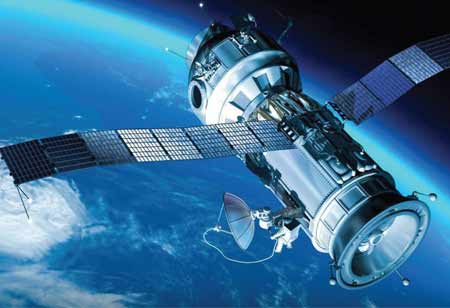Thank you for Subscribing to Construction Business Review Weekly Brief

Opportunities Offered By Satellite Technology And Low Earth Orbit To The Construction Industry
Introduction
In recent years, the construction sector has begun to look with growing interest at satellite technologies and the opportunities offered by Low Earth Orbit (LEO). These tools, traditionally associated with telecommunications and Earth observation, are demonstrating extraordinary potential to revolutionize how we design, build and manage infrastructure.
Enhanced Monitoring And Planning
One of the most immediate applications of satellite technologies in construction involves project monitoring and planning. Low Earth Orbit satellites, with their ability to collect high-resolution images and real-time geospatial data, provide a detailed view of terrain and environmental conditions.
These data can be used to analyze soil composition, identify potential geological risks and plan construction phases with greater precision. For complex infrastructure projects such as bridges or tunnels, access to accurate ground information can significantly reduce error margins and unforeseen costs.
Construction Monitoring: A New Frontier
Satellite-based monitoring of construction projects is gaining significant traction, offering substantial advantages across multiple dimensions. LEO satellites enable precise monitoring of any point on Earth, including remote areas such as deserts or poorly connected regions, where critical infrastructure is often located.
A particularly innovative aspect is the ability to monitor structural movements and deformations with extraordinary precision, detecting sub-centimeter displacements. This level of accuracy allows for timely identification of structural issues or anomalies, enhancing safety and maintenance protocols.
Furthermore, recent developments in satellite technology have introduced an additional advantage: the ability to preprocess data directly onboard the satellite. Through integration with machine learning algorithms, satellites can analyze and filter data before transmitting it to Earth, significantly reducing the volume of information to process. This approach not only accelerates data management but also makes it more cost-effective and environmentally sustainable. In space, low temperatures and solar energy represent ideal resources to power these processes, reducing environmental impact compared to traditional ground-based infrastructure.
Sar Interferometry: Precision Technology
A particularly innovative aspect of satellite monitoring is the use of SAR (Synthetic Aperture Radar) Interferometry, which can detect ground or infrastructure movements with extraordinary precision, down to a few millimeters. SAR interferometry enables analysis of deformations (current and historical) induced by landslides, subsidence phenomena and volcanic activity, providing quantitative measurements of displacement rates over time, ensuring global coverage for continuous and precise monitoring of structures, even in real-time.
For The Construction Sector, The Sky—Or Rather, Low Earth Orbit—Is No Longer The Limit But A New Opportunity To Explore
Satellite SAR Interferometry is a remote sensing technique through which displacement maps of current and past processes can be obtained. SAR data allows for extremely precise displacement time series.
Project Management And Work Progress Monitoring
Another area where satellite technology is making a difference is in ongoing project management. LEO satellites enable real-time monitoring of work progress, verification that activities align with the schedule and identification of potential delays or problems.
This remote monitoring capability is particularly useful for projects in difficult-to-reach areas or extreme climate conditions. Additionally, integrating satellite data with technologies such as drones and IoT (Internet of Things) sensors creates a digital ecosystem that improves site transparency and communication for both construction and operational phases.
Sustainability And Resource Management
Sustainability has become a priority for the construction sector and satellite technologies can play a crucial role in this area. Satellites can monitor the environmental impact of construction sites, detecting deforestation, soil erosion, or water pollution.
Furthermore, satellite data can optimize resource use, such as water and construction materials, reducing waste and improving energy efficiency. This approach not only helps reduce the environmental impact of projects but can also generate significant savings for companies.
An important aspect is also related to the use of human resources employed in the often complex monitoring of structures. In many cases, monitoring activities involve limiting operations or, in some cases, complete shutdowns. Remote satellite monitoring completely eliminates these issues, ensuring continuous monitoring without ever interrupting ongoing activities, with significant time and cost advantages.
Cutting-Edge Use Of Satellites For Construction Without Human Presence
One of the most fascinating and innovative frontiers in satellite use is the possibility of using transmitted data to support construction without human presence. This perspective, linked to space development plans, aims to create autonomous infrastructure in extreme or extraterrestrial environments.
Satellites collect detailed geospatial data that allow for selecting the best construction sites and monitoring progress in real-time, even in inaccessible locations. Integrated with 3D printing and robotics, these data enable the construction of structures without human presence, such as on Mars or the Moon.
Construction without human presence is crucial for expansion into space and the creation of self-sufficient extraterrestrial habitats. On Earth, this technology serves to build in dangerous or inaccessible areas, such as disasterstricken regions. The integration of satellites, AI and robotics is revolutionizing the construction sector, expanding the boundaries of what’s possible.
Conclusion
Satellite technologies and Low Earth Orbit represent an exciting frontier for the construction industry. From planning to management, sustainability and innovation, the opportunities are immense and continuously evolving.
Adopting these technologies means not only improving efficiency and reducing costs but also contributing to building a more sustainable future. For the construction sector, the sky— or rather, low Earth orbit—is no longer the limit but a new opportunity to explore.








